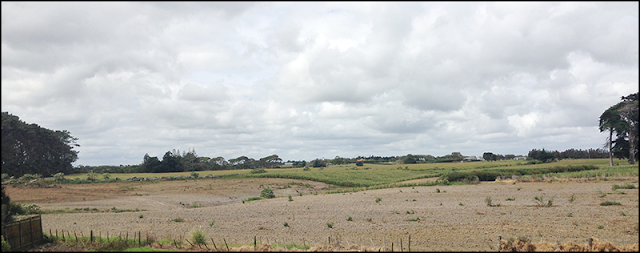It’s been rainy in Auckland a lot lately. Not tempest sort of rain, fortunately, but there have been quite a few extended periods of rain lately, and today it was often extremely rainy and/or windy. Not at all nice. But, such things happen.
At the time I took the photo above this morning, it had been raining more or less steadily since well before dawn. I took the photo in between periods of heavy rainfall, and before a (briefly) very windy time that was so windy it dried the wet concrete of our driveway. When I went out to check the mail a little while ago, there was some minor surface flooding on the lawn, much as there was after the “Tasman Tempest” (a nickname many people have ridiculed…).
The water conservation campaign is still in effect, and the need for it won’t be helped by all this rain stirring up yet more silt in the drinking water reservoirs. Still, Watercare (the Council “Controlled” Organisation responsible for water and wastewater) has put up mobile lighted billboards all over the place (including in some quite sparsely populated areas…) saying “Come On Auckland” with an admonition to save water. This has sparked further ridicule.
The signs could be taken two ways: As if meant in a moaning, complaining tone, or in a cheerleading tone. I have to admit that the first is what I thought when I read it. The Mayor isn’t happy with Watercare for being so shockingly unprepared for major weather events, especially since such “once in a century” storms are becoming more and more frequent because of climate change.
The rain lately has been a bit more frequent and persistent than usual, and that's causing problems. We’ll have other periods like this in the future, and also periods of drought, both of will certainly become worse in the years ahead.
Right now, though, it’s just a very rainy day that disrupted my plans. But, such things happen.



